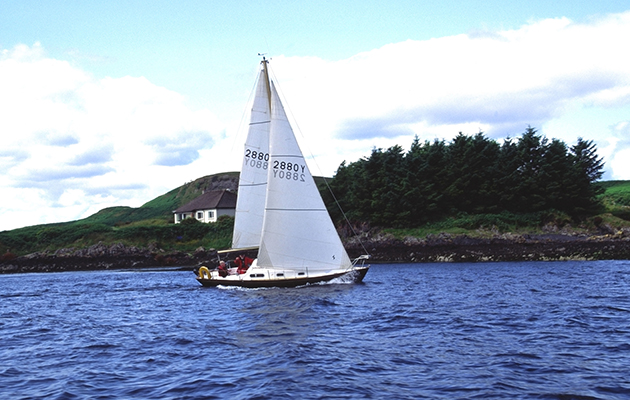[ad_1]
With a tidal current against you and a tired crew, should you push or turn around? James Stevens answers your seamanship questions
Should we continue with a tired crew?
James Stevens is answering your seamanship questions.
Question:
John is the skipper of Grace, a traditional 35-foot wooden gaff cutter.
He is on his way to the maritime festival in the Breton port of Douarnenez.
He has two crew who have already made the trip, but after sailing nonstop since yesterday, they are tired.
Currently it is 10 miles west of Roscoff in a westerly wind. It is raining and the visibility is about a mile.
Credit: Maxine Heath
Although the high tide has swept them advantageously along the northern coast of Brittany, it is now slack and will turn against them at a maximum speed of 2.6 knots.
It is 2100 hours and the light is fading.
John wants to continue because the event starts the next day and the idea of ​​seashells drizzled with cider and calvados is a strong incentive.
The next port ahead of him where he could stop and rest is L’Aberwrac’h, about 20 miles to windward.
Grace made about 4 knots with her engine underpowered and turned at about 115º.
The forecast is WSW 4 to 5 soon turning NW. The alternative is to return with the tidal current to the marina of Roscoff, or there is an anchorage and a possible mooring for visitors at about the same distance inside the island of Batz. .
The distance to Douarnenez from Roscoff is 80 miles and from L’Aberwrac’h 54 miles.
What should John do?
Reply:
This depends on the morale of the crew.
If John continues, his ground track for the next 6 hours will be the nautical equivalent of mowing the lawn, going up and down and not making much progress.
It’s going to take a bit of leadership to keep the crew’s enthusiasm in the dark and drizzling.
Once the tide starts to turn in a favorable direction, it will be in a good position to continue.
The wind will change in the next 6 to 12 hours, leaving a free pace in Douarnenez.
Continued below …

For sailors considering a cruise vacation in France, Ken Endean examines options for making a…

Toby Heppell receives advice from Pete Goss, Dee Caffari and Conrad Humphreys to skipper with friends and family

James Stevens is answering your seamanship questions. This problem – when is the best time to leave port facing …

Duncan Kent thinks he’s found the best Tides Planner app for iPad and iPhone yet
Progressing slowly against the tide has been part of a day’s job for gaff-rigged captains for centuries and with moderate forecasts, Grace will not be in danger.

James Stevens, author of the Yachtmaster Handbook, spent 10 of his 23 years at the RYA as the Yachtmaster Training Officer and Chief Examiner
It is demoralizing, however, and John has to judge whether the willpower and endurance of the crew will have any impact on the safety of the yacht.
If it looks like his crew are not going to continue one more night, they must get back to Roscoff.
In a visibility of one mile, her safest option is to sail north of ÃŽle de Batz and anchor, moor or enter the marina.
In reality, John should have thought about it and entered Roscoff earlier if necessary.
Once in Roscoff, they either wait for the tide to turn in their favor at 3:00 a.m. or, as the crew is tired, take the afternoon tide at L’Aberwrac’h and miss the start of the festival.
[ad_2]

